Alathra:Races: Difference between revisions
Added recently approved minor races |
OneDarkWolfy (talk | contribs) mNo edit summary |
||
| Line 101: | Line 101: | ||
<small>'''Height range:''' 1.67 - 2.10 meters</small> | <small>'''Height range:''' 1.67 - 2.10 meters</small> | ||
'''Wood Elves''' are a shorter, typically darker-skinned designation of elves. They’re typically more aligned with human physiology than their | '''Wood Elves''' are a shorter, typically darker-skinned designation of elves. They’re typically more aligned with human physiology than their Elf counterparts. They much prefer living in and amongst forested areas than constructing grand cities like other elves. Due to this, their histories are often less well documented than other designations of elves. | ||
Since their discovery by human societies, there’s been some debate as to whether or not the “wood” in “Wood Elves” refers to their complexion or their forested habitat. | Since their discovery by human societies, there’s been some debate as to whether or not the “wood” in “Wood Elves” refers to their complexion or their forested habitat. | ||
Latest revision as of 16:45, 11 July 2025
Alathra implements a semi-strict races system that consists of Major and Minor races. The Major races form the cultural and biological foundation of Alathra's worldbuilding. Major races have been defined by staff and include within them the most common races in the fantasy setting. Major races are supported by staff to be always included in universal worldbuilding and will exist throughout Alathra's lifespan.
A player can choose to branch off of any of the Major races to create their own subrace, referred to as Minor race. Creating a Minor race means you’re responsible for upholding its lore and involvement in the world. Minor races must be properly documented on the Alathra Wiki before a character application is submitted. If all members of a Minor race go inactive, its documentation will remain but staff will not continue their story in the greater lore of Alathra.
| Guidelines for Creating a Minor Race |
|---|
Lore Responsibility & Canon Status Creating a Minor Race makes you its first chronicler, you are responsible for its integration and sustainability in the world of Alathra. If all active members of a Minor Race go inactive, its page will remain, but staff won't maintain the race or support its involvement in broader canonical events. Think of Minor Races as community-built branches of the tree that is Alathra’s lore. Plant them wisely, and they may flourish. |
Major Races of Alathra
Humans
| Human | |
|---|---|
| Major race | |
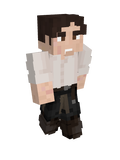 Example appearance | |
| Attributes | |
| Average lifespan (max) | 70 years (140) |
| Age of maturity | 20 years |
| Height range | 1.50 - 2.00 m (4′11′′ - 6′6′′) |
Humans, also referred to as simply Men, are a hardy, industrious race, typically taller than dwarves and shorter than elves. They’re typically found on the surface, and are best suited to temperate climates. Though, they’re a rather adaptable race, and with enough work can typically weather even the harshest of environments.
Humans are one of the less magically adept species, lacking any innate or biological affinity for magic. To make up for this, they rely on advanced tool-making and powered machinery powered by either manpower or carbon fuels to develop their societies, rather than magic.
Some humans, despite their lack of innate magical affinity, still seek to pursue magic in one way or another, though this usually requires the assistance of past knowledge or a non-human entity, and usually comes at great cost to a human’s mind or body.
List of current subraces:
- None defined
Minor races made by the community:
Dwarves
| Dwarf | |
|---|---|
| Major race | |
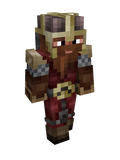 Example appearance | |
| Attributes | |
| Average lifespan (max) | 160 years (320) |
| Age of maturity | 40 years |
| Height range | 1.20 - 1.53 m (3′11′′ - 5′) |
Dwarves are a short, stout and usually bearded race. They typically weigh the same or more than most humans. They are typically accustomed to underground environments.
Dwarves, more often than not, are both psychically deaf and lack any affinity for magic. Like humans, they’re more reliant on advanced tool-making and large contraptions powered by either manpower or carbon fuels to develop their societies, rather than magic.
List of current subraces:
Gnomes |
|---|
|
Average lifespan: 160 years Gnomes are a subrace of dwarves, known for their more mischievous personalities, and their much closer affinity to overground nature, compared to their standard dwarven counterparts. Gnomes are typically much weaker than standard dwarves, and oftentimes weaker than most other races. As such, they’re known to make burrows and small settlements within thick, dense forests. This has led to a common stereotype amongst other races of gnomes making their homes almost exclusively within large forest mushrooms. |
Elves
| Elf | |
|---|---|
| Major race | |
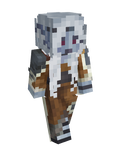 Example appearance | |
| Attributes | |
| Average lifespan (max) | 400 years (800) |
| Age of maturity | 80 years |
| Height range | 1.67 - 2.10 m (5′5′′ - 6′10′′) |
Elves are a tall, proud, and often authoritative race. They’re notable for being the longest-living and most magically adept race. Like humans, they’re found on the surface and are most at home in dense, temperate forests. Elves are skilled architects, but are typically prone to sacrificing function for form and beauty.
Due to their significantly higher than average lifespan, many elves view themselves as the rightful “leaders” of the world, seeing other races as in need of guidance, often against their own desires. Though this authority is often not realised, as their longer lifespans typically lead to elves being more apathetic towards societal development. It’s common to see elvish construction projects take several times longer than those of humans or dwarves.
List of current subraces:
Wood Elves |
|---|
|
Average lifespan: 400 years Wood Elves are a shorter, typically darker-skinned designation of elves. They’re typically more aligned with human physiology than their Elf counterparts. They much prefer living in and amongst forested areas than constructing grand cities like other elves. Due to this, their histories are often less well documented than other designations of elves. Since their discovery by human societies, there’s been some debate as to whether or not the “wood” in “Wood Elves” refers to their complexion or their forested habitat. |
Orcs
| Orc | |
|---|---|
| Major race | |
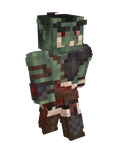 Example appearance | |
| Attributes | |
| Average lifespan (max) | 55 years (110) |
| Age of maturity | 14 years |
| Height range | 1.47 - 1.80 m (4′10′′ - 5′11′′) |
Orcs are a sturdy, typically nomadic race, and are generally regarded to be the heaviest and physically strongest, but supposedly least mentally adept race. In truth, their intelligence lies in instinct and lived experience. They’re a typically nomadic race, preferring to live their lives migrating with the seasons. In recent years, more and more orcs have taken on sedentary lifestyles.
Orcs are highly intelligent beings, but lack the same innate understanding of abstract concepts (ie. currency, philosophy, chivalry) like other races, leading to them being seen as less intelligent overall. Due to this, it’s rare to see orcs in positions of power outside of their own societies, being most commonly found in non-orc societies as foot soldiers and manual labourers.
Orcs are typically born with light stripes on the back of their bodies, akin to wild boar, stretching from the back of their heads to their lower backs, but lose these stripes upon maturity.
List of current subraces:
- None defined
Merfolk
| Merperson | |
|---|---|
| Major race | |
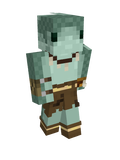 Example appearance | |
| Attributes | |
| Average lifespan (max) | 60 years (120) |
| Age of maturity | 15 years |
| Height range | 1.10 - 1.75 m (3′7′′ - 5′9′′) |
Merfolk are a gentle, aquatic race of humanoids that resemble fish, amphibians, and other aquatic animals. Unlike Reptilians and Beastkin, their respiratory and reproductive biology can vary, with some merfolk laying eggs and breathing through gills like fish, while others breathe with lungs and give birth, like dolphins and whales.
Merfolk are the most adept race at swimming, and can typically stay underwater without surfacing for days at a time. Adversely, they’re significantly weakened on land, and exhaust their energy significantly quicker than in the water.
This stark difference in living environment has led to contact between merfolk and non-merfolk races to be significantly hampered, leading to merfolk being less militaristic and more innately amicable than other races.
List of current subraces:
- None defined
Minor races made by the community:
Reptilians
| Reptilian | |
|---|---|
| Major race | |
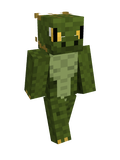 Example appearance | |
| Attributes | |
| Lifespan range (max) | 70 – 250 years (500) |
| Maturity range | 20 – 60 years |
| Height range | 1.60 – 7.00 m (5′3′′ - 22′11′′) |
Reptilians are, as the name would suggest, a tough, territorial race of humanoids that resemble lizards, snakes and other reptiles. Unlike Beastkin, they always lack human-like skin and maintain reptilian respiratory and reproductive systems, laying eggs as opposed to giving birth.
They’re notably territorial and protective of their belongings, often being harder to negotiate with than other races. This has led to a stereotype amongst other races of reptilians being superficially obsessed with trinkets made of rare metals, referred to as “shinies”.
Their humanoid physique often creates complications with laying eggs, more so than their mammalian counterparts. This has led to a higher rate of mortality in mothers compared to their mammalian counterparts. As such, reptilian populations are typically lower than other races.
List of current subraces:
Lizardfolk |
|---|
|
Average lifespan: 70 years Lizardfolk are generally regarded to be the most “humanoid” of the Reptilian race, maintaining a physique and build similar to a standard human. They typically resemble common terrestrial lizard species, though unlike Beastfolk, do not directly mirror such species. They’re viewed as the most agreeable and negotiable of the Reptilian race by outsiders, and are typically the easiest to integrate into non-Reptilian societies. |
Dragonfolk |
|---|
|
Average lifespan: 250 years Dragonfolk are, in most cases, the first thing that comes to mind when one thinks of a Reptilian. Tall, bulky, possessive, and all around not the most model of citizens in most societies. Dragonfolk, more often than not, have an innate desire to lead, rule, and generally have power and authority over things, no matter how adept they are at handling such positions. Additionally, once in such a position, they will fight tooth and nail to keep it. As such, much like Orcs, they’re generally not trusted in positions of authority in non-Reptilian societies, not entirely without a little resentment. |
Lamia |
|---|
|
Average lifespan: 70 years Lamia are an anomaly amongst the sapient races, as they’re the only subrace to lack legs, instead having a Snake-like tail that they can slither with. Unlike other reptilian subraces, Lamia more often than not have hair on their head, typically wild and unkempt. Lamia have historically been seen as tricksters, liars, or generally just untrustworthy compared to other subraces, due to their less human appearance. In some cultures, they’re used as quasi-mythological “boogeymen” to frighten children into obedience. |
Beastfolk
| Beastfolk | |
|---|---|
| Major race | |
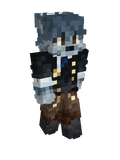 Example appearance | |
| Attributes | |
| Lifespan range (max) | 50 – 70 years (140) |
| Maturity range | 15 – 25 years |
| Height range | 1.40 – 3.80 m (4′7′′ - 12′5′′) |
Beastfolk, also occasionally referred to as Beastkin, is a catch-all term to describe any humanoid race with notable physically animalistic attributes. Beastkin differentiate themselves from Merfolk and Reptilians by their overwhelming biological preference towards mammalian attributes, typically feline (cats), canine (dogs), lupine (wolves), leporid (rabbits), cervine (deer) and rodentine (rats) in nature.
Beastfolk typically vary in their resemblance to their resemblant species, varying from simply having resembling appendages such as ears and tails, to being tantamount to humanoid, sapient variants of their resemblant creature.
List of current subraces:
High Beastfolk |
|---|
|
Average lifespan: 70 years High Beastfolk are Beastkin whose faces lack fur. In most cases, they very closely resemble standard humans, though with slight variations on parts of their body. Due to the similarity, they’re generally regarded quite similarly to humans, though face some discrimination in more stringent societies. |
Ferals |
|---|
|
Average lifespan: 50 years Ferals are Beastkin whose faces are covered in fur. Most ferals simply look like a humanoid counterpart to the creature they resemble. Due to this resemblance, they’re often regarded in a similar way to said animal. This leads to common stereotyping where they’re regarded as less sapient than their humanesque counterparts. This has led to resentment amongst certain feral societies, with many coming to consider themselves the “true” beastkin. |
Lycanthropes |
|---|
|
Average lifespan: 50 years Lycanthropes or Werefolk, are those whose beastfolk status is temporary, and often conditional. They’re typically members of other races that have the capacity to transform into beings that resemble Ferals under specific circumstances. They’re one of many subraces that have, throughout history, been seen as quasi-mythological “boogeymen” to frighten children into obedience. |
Florans
| Floran | |
|---|---|
| Major race | |
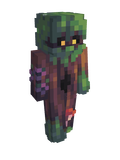 Example appearance | |
| Attributes | |
| Lifespan range (max) | 80 – 200 years (400) |
| Maturity range | 20 – 100 years |
| Height range | 1.20 – 2.30 m (3′11′′ - 7′6′′) |
Florans, occasionally referred to as Plantfolk or Plantkin, is a catch-all term to describe any humanoid and/or sapient race that shares more biology with Plants or fungi than animals. The typical stereotype of a Floran is that of an androgynous humanoid made mostly of vine and flower matter, though Florans made of tree bark, mushroom matter, and other plant-based substances are also common in certain regions.
As one would expect, they’re thoroughly in tune with nature, being adept in natural magic more so than any other race, but their plant-based bodies are weaker than their flesh-based counterparts. They’re especially weakened in cities, where plants are much less common.
In the contemporary era, use of the term “Plantfolk” as a catch-all is frowned upon by taxonomists, being seen as reductionist towards Myceloids.
List of current subraces:
Phytoids |
|---|
|
Average lifespan: 120 years Phytoids or Plantfolk, are Florans that take on a genetic makeup resembling that of plants. They’re the most common kind of Floran, and are the most palatable to flesh-based societies. The stereotypes surrounding their kind and their preference towards natural habitats has created a sort of “noble savage” stereotype within some flesh-based societies, seeing them as innocent beings, free from the corruptive influence of contemporary society. |
Myceloids |
|---|
|
Average lifespan: 200 years Myceloids or Shroomfolk, are Florans that take on a genetic makeup resembling that of fungi, typically mushrooms. While only a little less common than their Phytoid counterparts, they’re seen significantly less in cities, as their methods of reproduction require spores that are often fatal to meat-based races in high enough quantities. |
Parasitians |
|---|
|
Average lifespan: Based on host race Parasitians are a designation of Myceloids that are sapient, yet lack a humanoid form of their own. As such, a humanoid form is usually stolen from another race to use as a “shell” for the Parasitian to inhabit. They resemble their shell, but typically look more weathered, with fungal markings and appendages often visible. Parasitians are typically viewed with abhorrence by all other races except Myceloids, and are almost always killed on sight in cities. As such, many Parasitians go to great lengths to hide their origins, and masquerade as their shell’s race. Once a host shell is picked, they’re unable to de-root themselves from the shell, and are bound to it until death. |